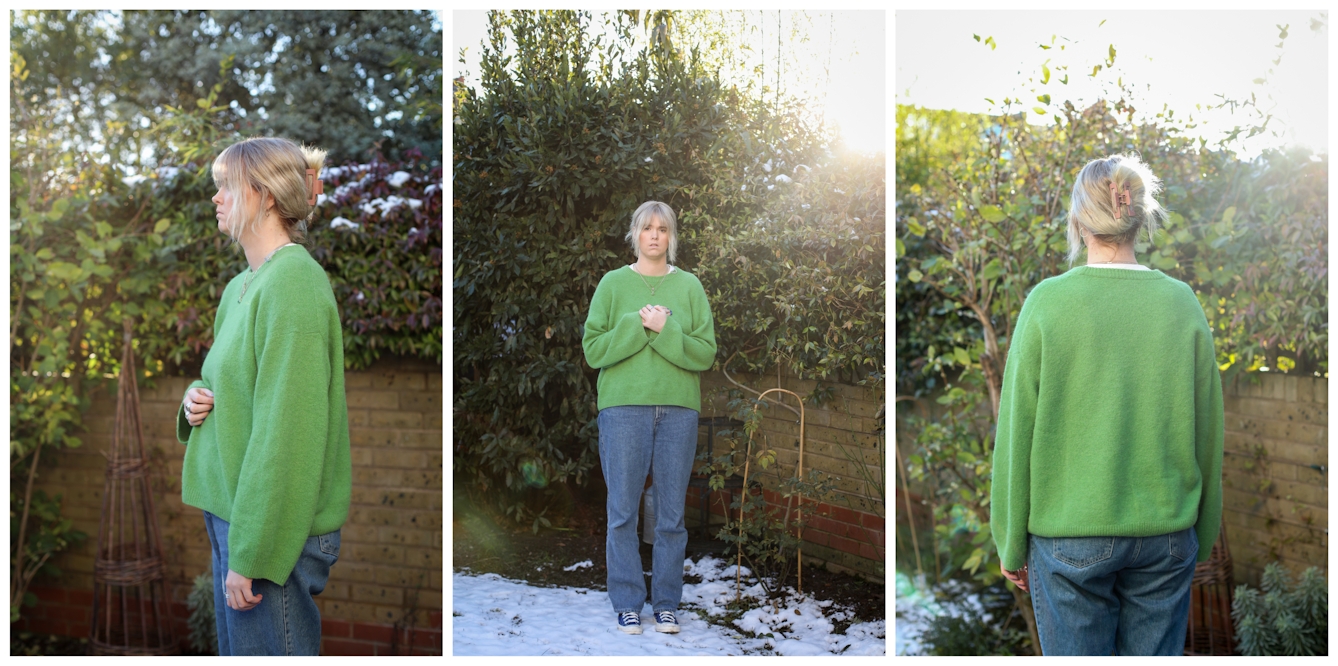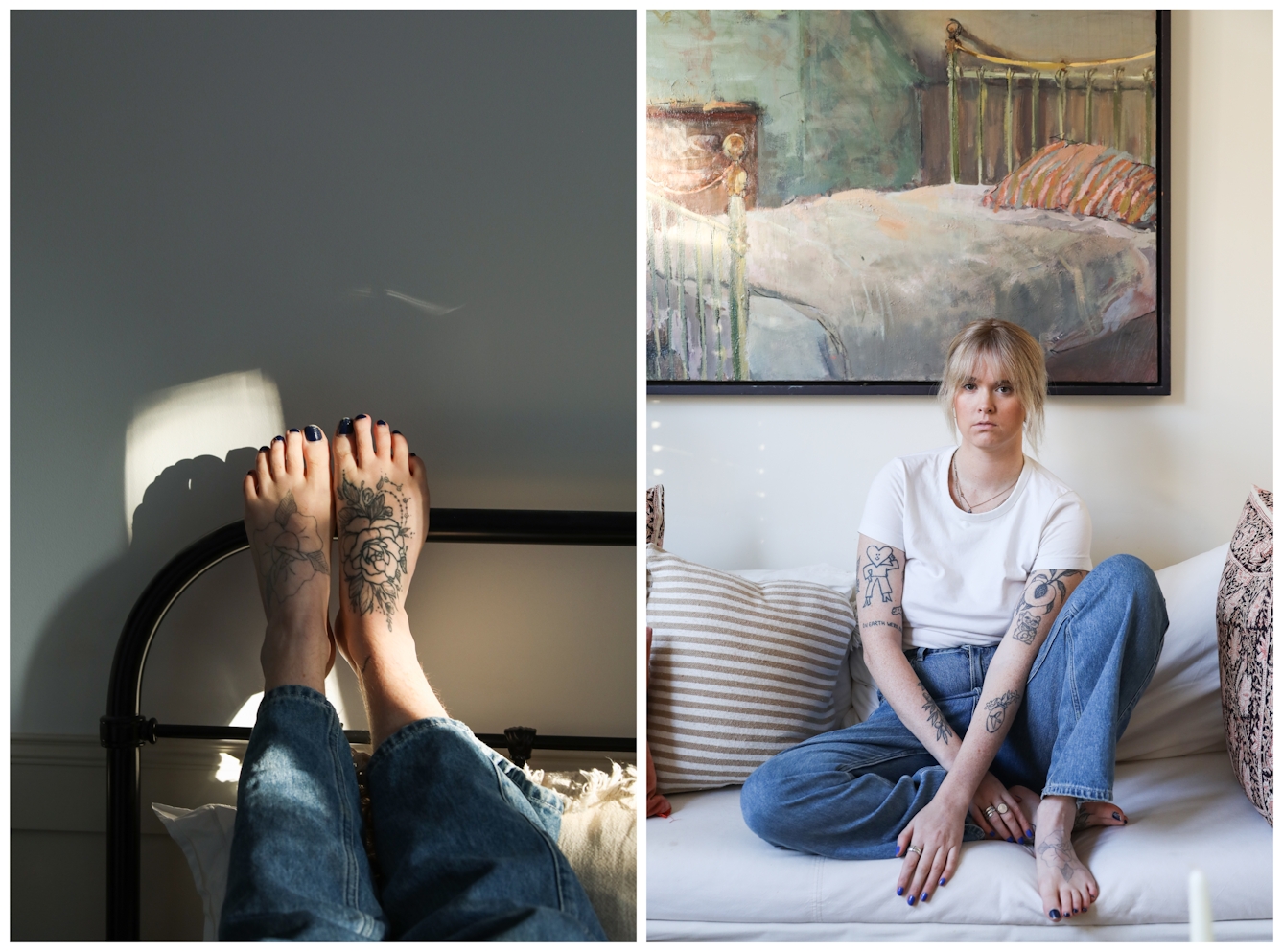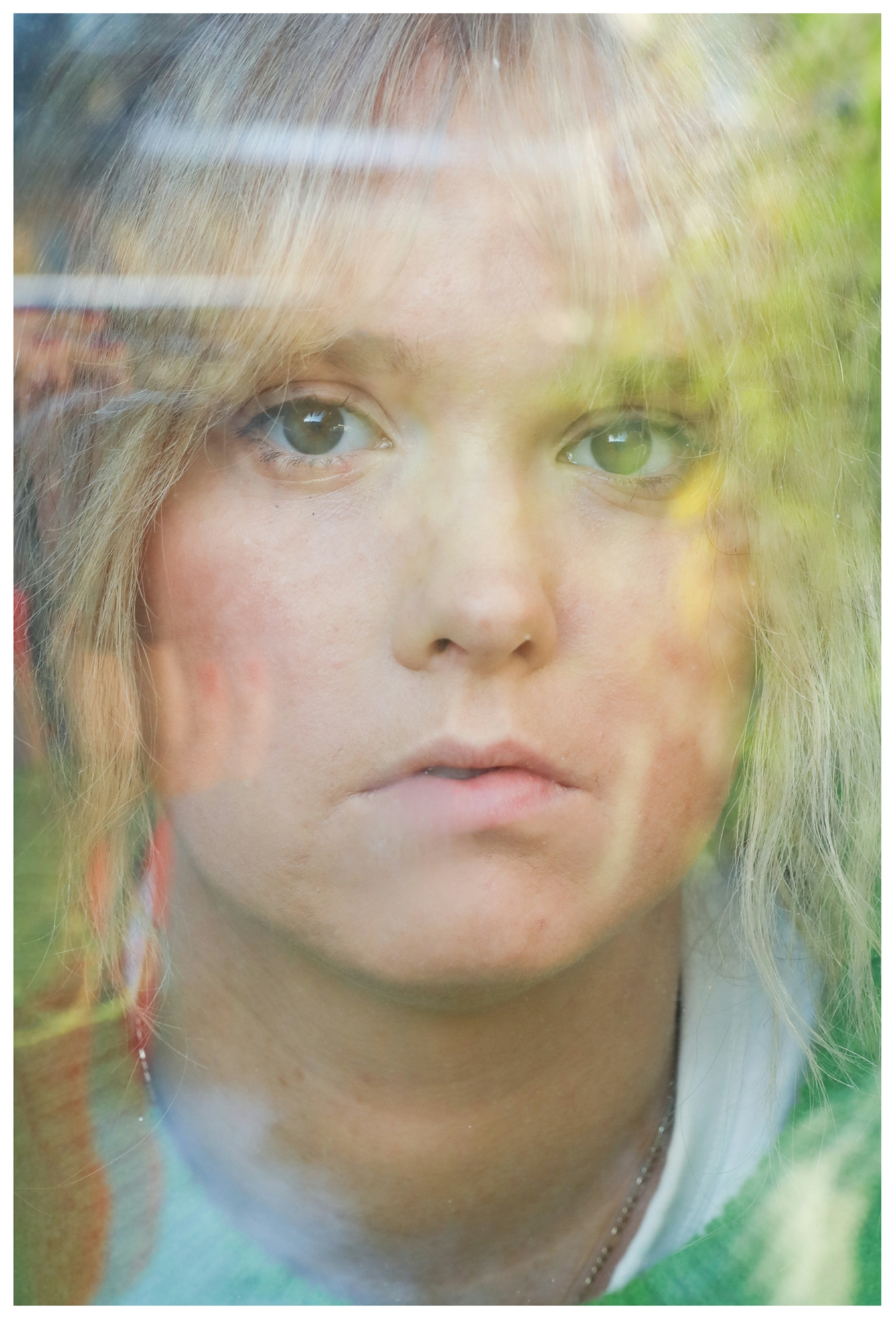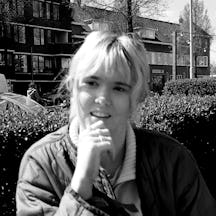We describe illness through our senses: you look unwell, you feel hot, your cough sounds bad. But what happens when the signs of your illness are invisible to the rest of the world? Hannah Turner describes the daily struggle of living with invisible illness and other people’s expectations.
Many of the illnesses I suffer from are referred to as invisible – unseen by the naked eye, medical mysteries of the healthcare system. But invisible illnesses are rarely unseen to their owner. My chronic migraines come with an aura, my thighs tremble when I have to stand on the train, my stomach bloats, my ovary is missing, and stitches cover my knicker line. I look over at myself in the mirror and see nothing but ongoing sickness.
When there are no external markers of a condition, this can flatten the impact of daily struggle. If you look well, then you should be able to manage your life, you should be able to work, socialise, to complete the tasks that life asks of you. Without visible signs of pain, sickness or struggle, others cannot see the constant juggling act asked of people who are living with an invisible condition.
You may see me at a celebration, but you do not see the day after, spent in a dark room, or the hours before, taking extra medications or napping on the car journey.

“Without visible signs of pain, sickness or struggle, others cannot see the constant juggling act asked of people who are living with an invisible condition.”
A diagnosis of invisible illness
I can name all the parts of me that are hurting at that moment, but the doctors remain unfazed, and often assume that I am not telling the truth. They look down at charts, blood tests and results, but provide few answers. My last doctor suggested “learning to live with it”, since I have so much of life left to go. I cannot help but think if I arrived bloody and bruised, with external markers of the pain I felt, how differently things would go.
The thesaurus has 31 alternatives to replace the word ‘invisible’, and almost all have negative connotations, especially if placed in front of ‘illness’: disguised, covert, concealed, inappreciable, ulterior, ethereal, veiled, unapparent, unnoticeable… unreal.
I am not on a mission to erase invisibility from the collective language of sickness. ‘Invisible’ as a label homogenises a collection of illnesses that have very little in common, almost becoming a diagnosis of its own, a diagnosis that is gendered, attached to distrust, assumed as invented by its sufferer. To say ‘invisible’ is to say ‘less of’.

“I can name all the parts of me that are hurting at that moment, but the doctors remain unfazed, and often assume that I am not telling the truth.”
Chronic illness and disability
When does chronic illness become disability? When you find out your life will forever be impacted by your poor health? When you experience discrimination based on your lessening ability to participate in society’s expectances of a good life?
Disability is sticky, fluid and often undefinable. There is no guide handed to you the day you leave a doctor’s office with the knowledge you are not getting better. In fact, there is often little conversation in general about the word ‘disability’: it is shrouded in shame, in deficiency, in an understanding that the label would do nothing but hold you back.
My own reluctance to identify as disabled when I was diagnosed with my first illness stemmed from a potent mix of not feeling like I was visibly sick enough to use the term, and false promises from the doctors (and the internet) that I would eventually recover from my illness.
We are raised to believe disability has a certain look: a person in a wheelchair, an injury acquired through incident. The question of what happened to you can only be asked when there is something to be seen: a wheelchair, a white cane, a medical attachment. Without a body scarred by trauma or violence, there is little room for understanding the occurrence of disability.

“We are raised to believe disability has a certain look. Without a body scarred by trauma or violence, there is little room for understanding the occurrence of disability.”
Reimagining the notion of sickness
I caught a virus on a plane, woke up on holiday abroad with a sickness, and never got better. I know it is hard to fathom, because I had to reimagine my idea of sickness too. Since I became ill at 21, and continued to get sicker at 25 and 26, I have been forced to think about the interior of myself falling apart while on the surface, and to strangers, I remain looking the same.
Traditionally, illness is conceived as a singular journey littered with physical markers that an outsider can observe. The fork in the road of illness splits two ways. One takes you the end of your life: terminal diagnosis or a fatal trauma, like a heart attack or stroke. The other takes you on a journey of recovery: a course of treatment, perhaps a period of rehabilitation, but the prospect of a return to ‘normal’ life.
When you recover, there are physical signs of improvement: you begin to walk again, your hair grows back. Even after the flu, someone comments, “You’re looking better.” As humans we understand sickness most clearly through our eyes.
But I now understand my own illnesses as a third way on that sickness journey – a detour that circles back on itself, and one that is only signposted to me. There is no reminder on my body for people to see, so I am left to expose my sickness again and again, to explain, over a ‘routine’ cup of coffee, that pain is ravaging through my bones, and I am already over my dose of necessary medication for the day.

“Since I became ill at 21, I have been forced to think about the interior of myself falling apart while on the surface I remain looking the same.”
Creeping invisibility
Invisibility doesn’t just refer to the visible manifestation of an illness, it alludes to the way the disease crept up on the body, the disguise those initial symptoms wear. It recalls how the condition was dismissed by doctors as anxiety, stress, nothing to worry about.
I spent a year with unnamed symptoms, fobbed off as experiencing depression, even lack of ambition. I still recall the first doctor who told me that getting a job would make me better. Five years on and many doctors later, I still cannot shake the memory of that first humiliation.
After living with these so-called invisible illnesses for so long, I have come to realise that invisibility as an idea is only relevant when thinking about the way others perceive me. I see my own sickness every day, as reminders of illness are scattered across my home: days-old dirty dishes, piles of clothes to wash and a windowsill full of pill packets. My environment is covered in this evidence and so is my body; the burns and scars all point to the internal pain I live with.
I know now that it is not my responsibility to show people how sick I am. If someone, whether that be a doctor, a stranger or friend, were to listen instead of just look, they would hear what I mean when I say I am always unwell, always in pain, always seeking relief. Perhaps then those who are not on that perpetual journey of sickness would also see that illness is not only something so easily and rigidly defined by time.
About the contributors
Hannah Turner
Hannah Turner is a writer and journalist whose work focuses on disability and chronic illness, and the way they intersect with everyday life. Her work can be found in publications such as Refinery29, Cosmopolitan and Mashable. She is an editor for Bookish Magazine, a new online book space. She runs a monthly newsletter, Sunday Bookmarks, where she discusses reading habits, current affairs and the politics of being sick. Hannah is London born and now lives in Amsterdam with her partner.
Maryam Wahid
Maryam Wahid lives and works in the West Midlands. Using the art of photography, Wahid’s work looks into her identity as a British Pakistani Muslim woman. She expresses the origins of the Pakistani community in her home town, Birmingham, by exploring her deeply rooted family history and the mass integration of migrants within the United Kingdom. Her work explores female identity, the history of the South Asian community in Britain, and the notions of home and belonging.


